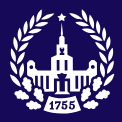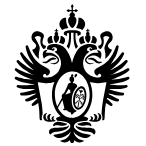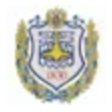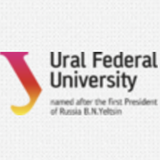Introduction
Tomsk Polytechnic University (Томский политехнический университет, abbreviated as ТПУ) is located in Tomsk, the capital of Tomsk Oblast, Russia. It is the first polytechnic university in Asia, Russia, and one of the top three polytechnic universities in Russia. It was the first in Russia to establish a degree system consistent with Europe and the United States.
Overview
Student size: more than 11,500 students and postgraduates.
Faculty: As of 2023, the university has 2,000 university teachers, 230 doctors, 1,050 associate doctors, 6 academicians of the Russian Academy of Sciences, 122 members of the Russian Academy of Public Professional Sciences and International Academy of Sciences, 2 national award winners and 7 government award winners, 14 Russian Federation and international award winners.
History
The university was founded in 1896. In 1925, it was renamed the Siberian Institute of Technology, and in 1934 it was reorganized into the Tomsk Polytechnic Institute. In 1944, it was awarded the status of a polytechnic institute. In the 1960s, the institute continued to strengthen its research infrastructure, established four research institutes, and launched the largest synchrotron accelerator and the only educational research reactor in the Soviet Union. In 1991, it was awarded the status of a technical university for its academic and research achievements.
Founded in 1896.
School Strength
Teaching Quality: The teaching quality management system has passed the ISO9001:2000 system certification, and seven majors taught in English have passed the accreditation of the American International Accreditation Center (GATE), the Canadian Engineering Accreditation Board (СЕАВ), and the Accreditation Board for Engineering and Technology (ABET). Its English teaching level is internationally recognized.
Scientific Research Achievements: The school has multiple scientific research institutions and advanced research equipment, actively carries out scientific research projects, and has achieved many scientific research results in the fields of petroleum engineering, nuclear technology, energy, chemical technology, etc., making important contributions to the development of science and technology in Russia. For example, the school's physicists conducted high-resolution studies on silane and methane infrared spectra for the first time, and created a deep learning model for accurately predicting the solubility of hydrogen in underground hydrogen storage reservoirs.
International Exchange: Close cooperation with universities in the United States, the United Kingdom, Germany, France, Japan, China, Cyprus, South Korea, India and other countries, actively carrying out international exchange and cooperation projects, attracting many international students to study and exchange, and enhancing the school's international influence.
Institutional Nature
Public research university.
Educational Philosophy
Focus on cultivating students' innovative and practical abilities, emphasizing the close integration of teaching and scientific research, and is committed to providing students with high-quality educational resources and a good learning environment, cultivating professionals with international vision and social responsibility, and contributing to the development of the country and society, with special emphasis on advanced engineering education, the creation of resource-efficient technologies, internationalization, and the integration of research and academic activities.
Key Laboratories and Disciplines
Key Laboratories: The school has research institutions such as the Institute of Nuclear Physics, the Institute of High Pressure, the Institute of Endoscopy, and the Novosibirsk New Process Technology Research Center. These laboratories are equipped with advanced research equipment, providing good research conditions for researchers and students.
Key disciplines: Nuclear physics, computer and information, electronics, microelectronics, chemistry, chemical engineering, electrical machinery, geology, economics and trade are all very strong disciplines in Russia and even in the CIS countries. Its petroleum engineering major ranks first among Russian universities in the international rankings, and it is also in a leading position in the fields of energy, chemical technology, nuclear technology and other disciplines.
Department
The school has the College of Natural Resources, the College of Energy Engineering, the College of New Manufacturing Technology Engineering, the College of Nuclear Technology Engineering, the College of Information Technology and Robotics, the College of Nondestructive Testing and Safety Engineering, the College of Engineering Entrepreneurs, the Yurga Institute of Technology, the Institute of Physics Research, the Institute of Chemistry and Biomedical Technology Research and other departments.
Ranking
2023: 398th in the QS World University Rankings.
2022: 9th in the RAEX-100 ranking of the best universities in Russia; in the subject rankings of Russian universities, the field of energy and chemical technology ranks first.
Expenses
Tuition: 14,000-30,000 yuan/year.
Living expenses: 1,500-2,000 RMB/month (for reference only, subject to individual actual situation).
Accommodation fee: RMB 800-1000/year, self-rental fee is about RMB 1000-2000/month.
Campus
Teaching facilities: The campus is equipped with high-speed network, computer courses and reading room and other learning facilities. It has the most advanced and comprehensive science and technology library in Russia, information analysis center, university press, university museum, etc.
Dormitory conditions: There are 15 student dormitories on campus, with 6125 places. There are segmented and corridor dormitories. The dormitories are divided into single rooms, double rooms and triple rooms. Each room is equipped with furniture such as beds, desks, wardrobes, shoe racks, chairs, etc. There are also living facilities such as kitchens, laundry rooms, gyms, auditoriums, study rooms, aerobics halls and tennis halls.
-

Peter the Great St.Petersburg Polytechnic University
-

Moscow State University M. V. Lomonosov
-

St. Petersburg State University
-

Bauman Moscow State Technical University
-

Tomsk State University
-

Peoples' Friendship University of Russia
-

Don State Technical University
-

Moscow Institute of Physics and Technology
-

Ural Federal University
-

Kazan Federal University
-

Mesoamerican University
-

Istmo University
-

Mariano Galvez University of Guatemala
-

Regional University of Guatemala
-

Galileo University
-

Francisco Marroquín University
-

Rafael Landívar University
-

University of the Valley of Guatemala
-

University of San Carlos of Guatemala
-

Technological Institute of Tlaxcala Plateau
-

Golfo University
-

Technological University of South Sonora
-

Technological University of Huejotzingo
-

Tizimín Institute of Technology
-

Chilpancingo Institute of Technology

